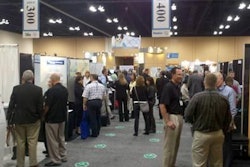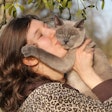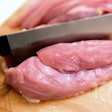Little is known about the energy requirements of cats in temperature climates. In this study, we determined the energy requirement using three groups of mixed gender domestic shorthaired cats: old kept outside (about 9.9 years old; 4.8 kg; n = 9), young kept outside (about 3.1 years old; 3.9 kg; n = 8) or young kept inside (about 3.1 years old; 3.9 kg; n = 8).
Cats were housed individually for five weeks during the summer (18.5 ± 0.5 degrees C) and winter (8.5 ± 0.4 degrees C) and were fed a commercially available maintenance diet ad libitum. Energy expenditure was determined from the rates of 2H and 18O elimination for blood H2O over a 12-day period in both seasons.
During the summer period, macronutrient digestibility was determined. Older cats had a reduction in apparent digestibility of dry matter (approximately 9%), energy (approximately 8%) and protein (6%). There was a significant effect of age and season on energy intake and energy expenditure. While lean mass was affected by age and season, there was no effect of age or season on energy expenditure when expressed as a proportion of lean mass. Possible seasonal differences in nutrient digestibility may explain these results.
Source : E.N. Bermingham et al., 2012. Seasonal and age effects on energy requirements in domestic shorthair cats (Felis catus) in a temperate environment. JAPAN online April 2012. doi: 10.1111/j.1439-0396.2012.01293.x
















